Normal Physical Science Worksheets for Ages 4-7
56 filtered results
-
From - To
Explore our engaging Normal Physical Science Worksheets designed for children aged 4-7! These worksheets provide young learners with a fun and interactive introduction to essential physical science concepts. Covering topics such as energy, matter, forces, and motion, our resources encourage curiosity and promote scientific thinking. Each worksheet is thoughtfully crafted to cater to different learning styles, making it perfect for home or classroom use. With colorful visuals and age-appropriate activities, kids will enjoy hands-on learning while developing critical skills. Empower your child’s scientific journey today with our captivating worksheets that make learning about the physical world an exciting adventure!
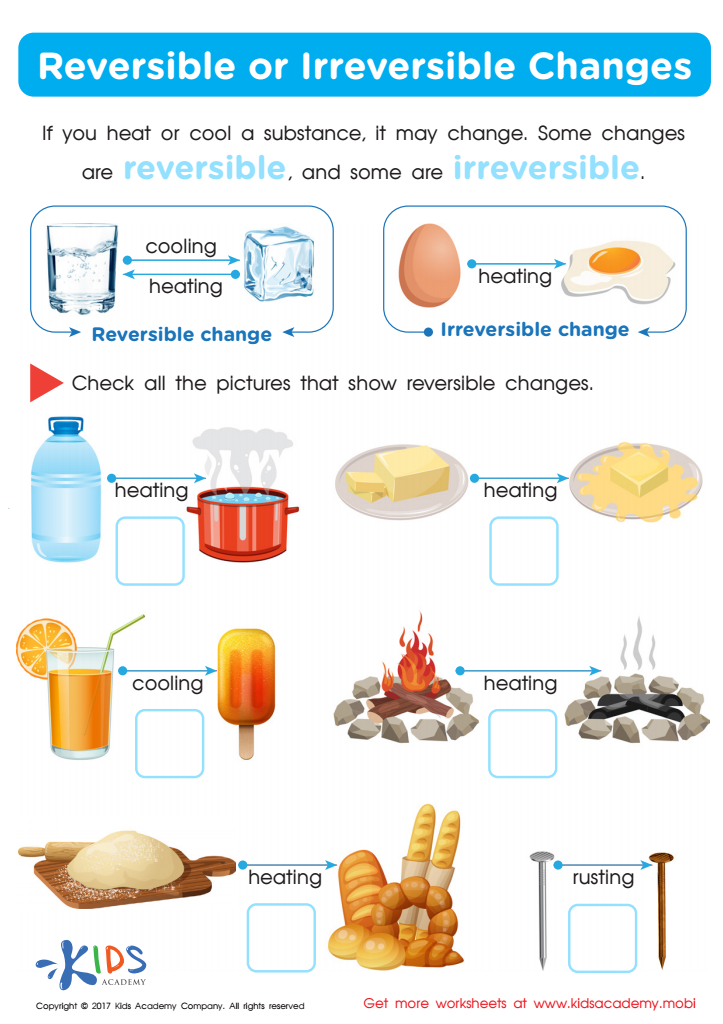

Reversible Irreversible Changes Worksheet


Simple Machines Inclined Plane Worksheet
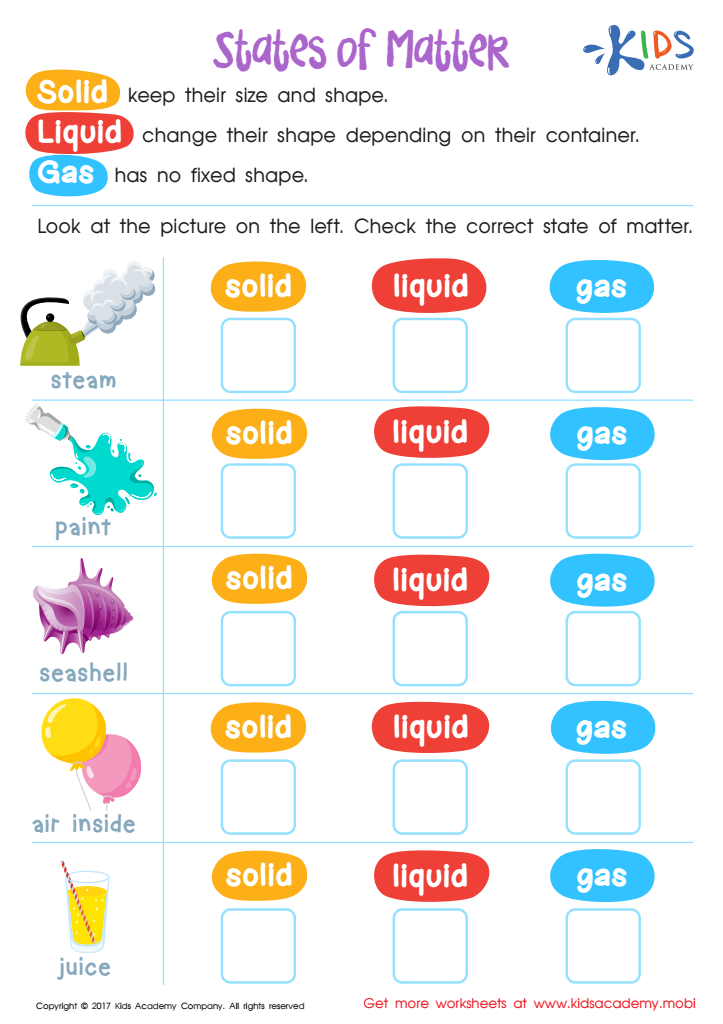

Physical Science: States of Matter Worksheet


Matter: Assessment 1 Worksheet
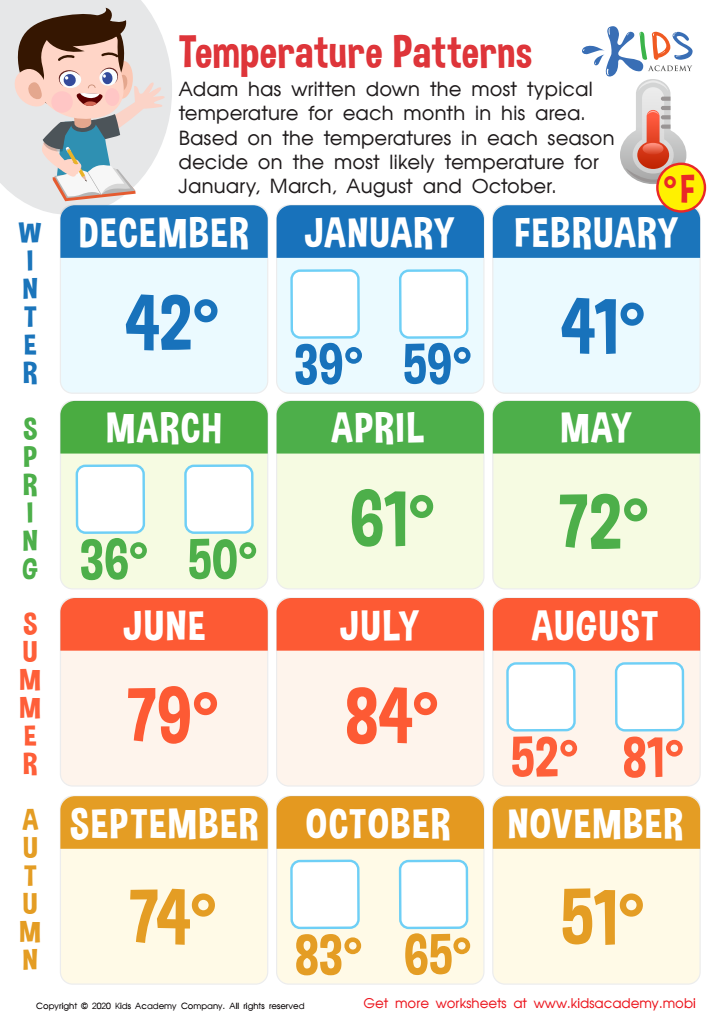

Temperature Patterns Worksheet
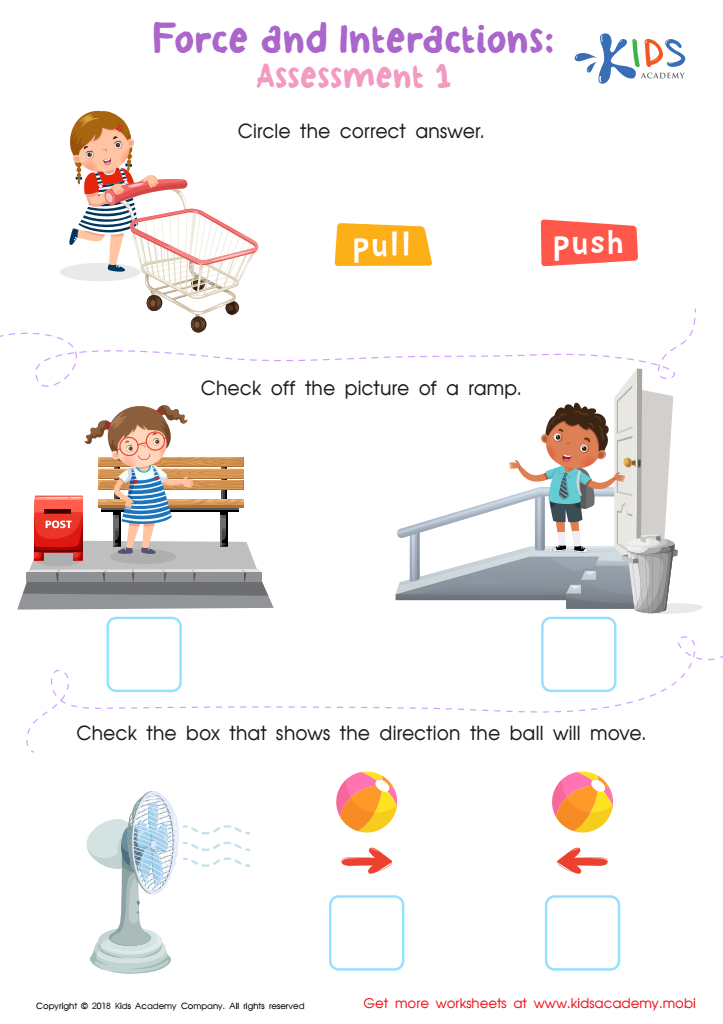

Force and Interactions: Assessment 1 Worksheet


Safety Sounds Worksheet
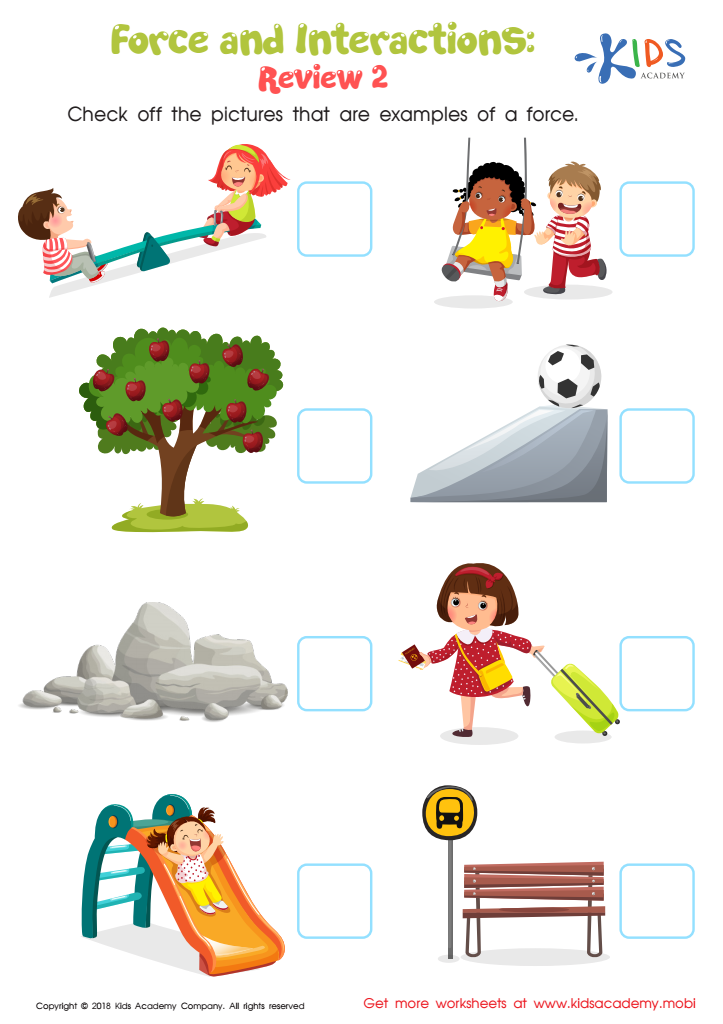

Force and Interactions: Review 2 Worksheet
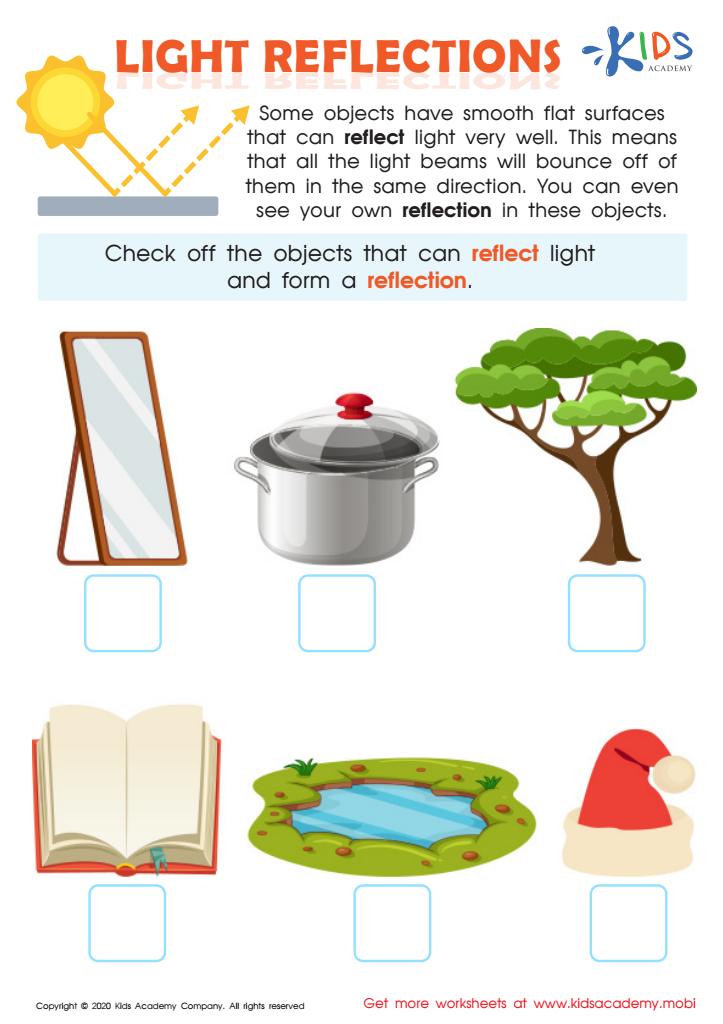

Light Reflections Worksheet
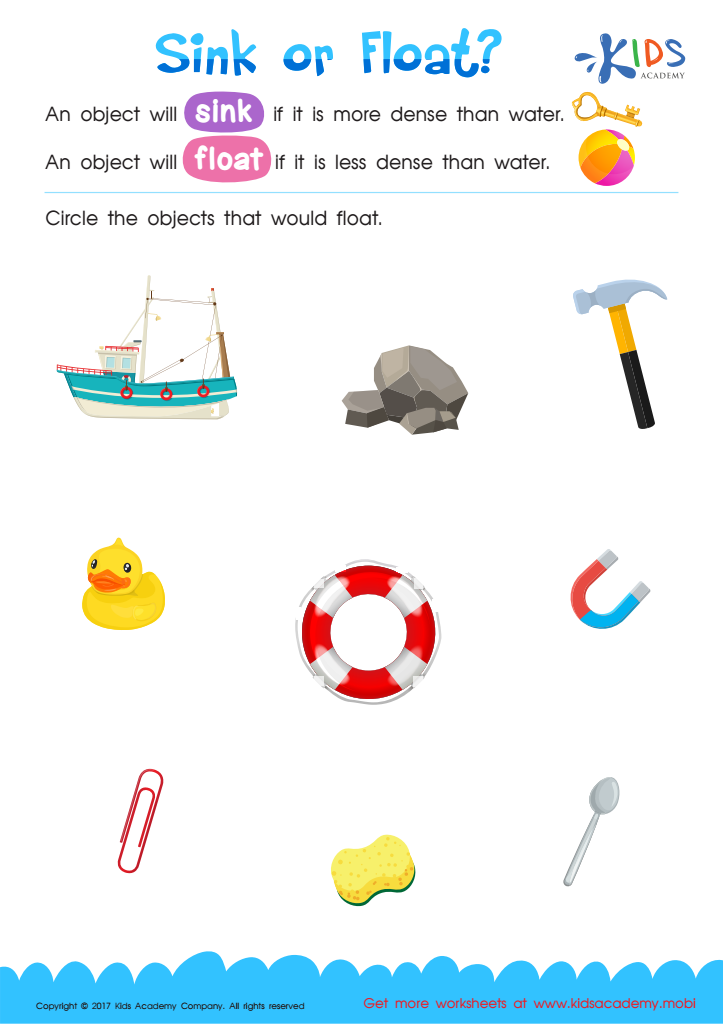

Sink or Float Printable


Going up or Down? Worksheet
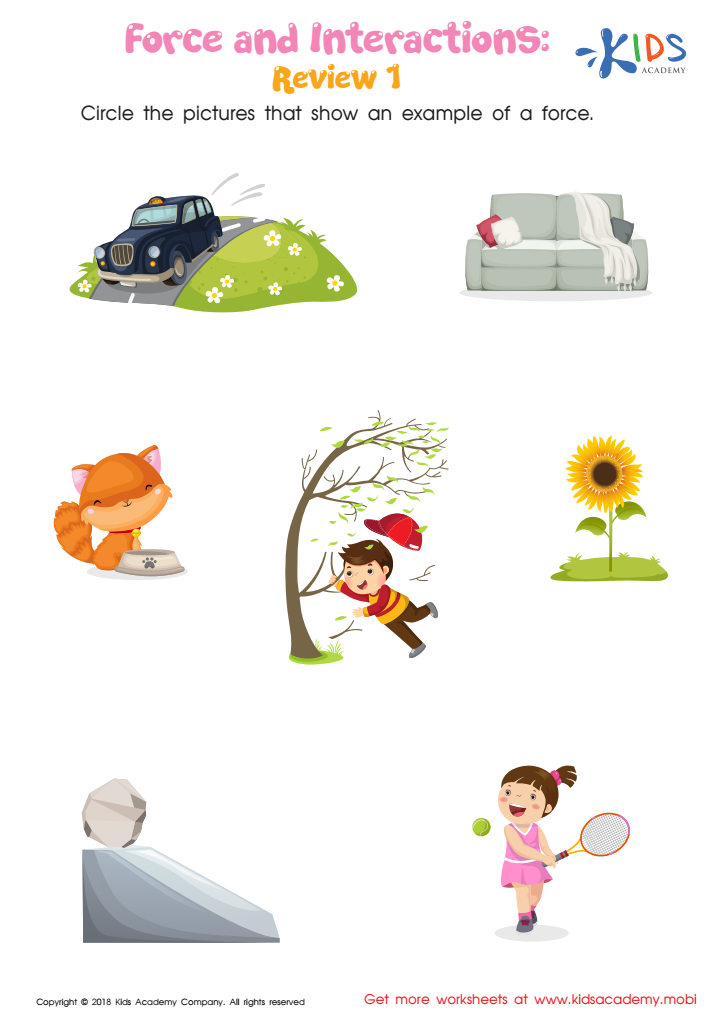

Force and Interactions: Review 1 Worksheet
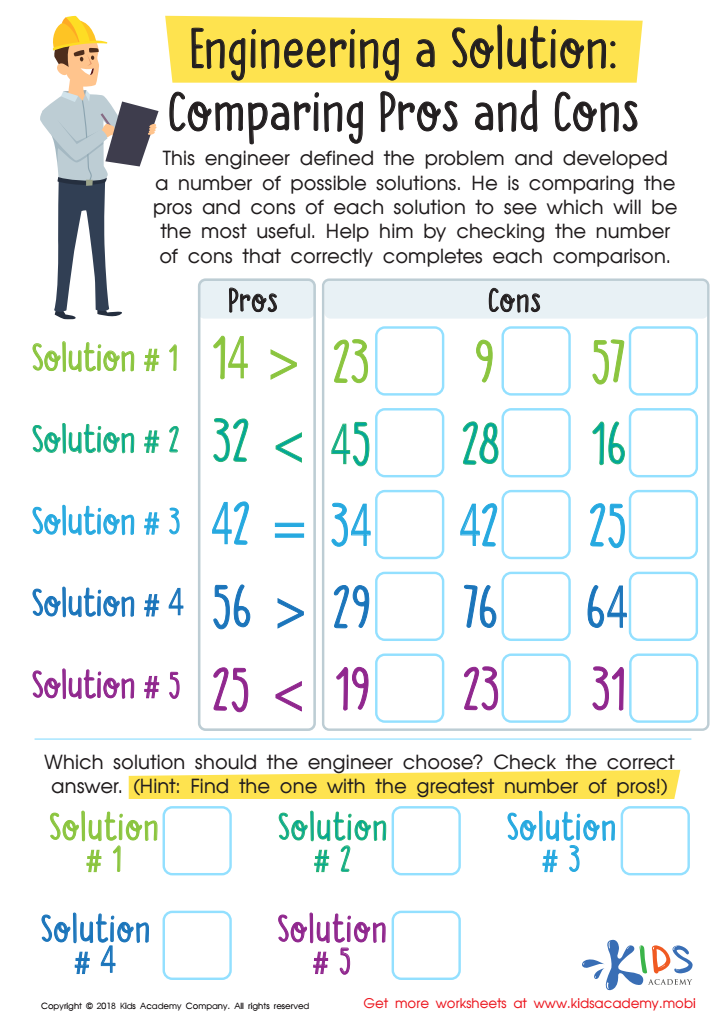

Engineering a Solution: Comparing Pros and Cons Worksheet
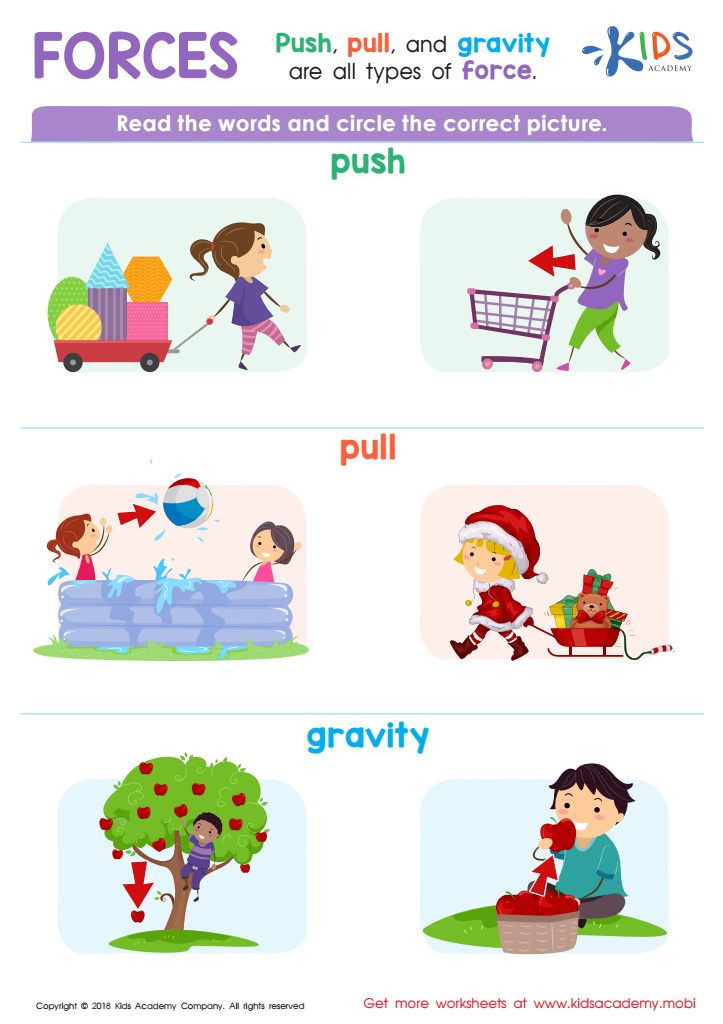

Forces Worksheet


Which Is Brighter? Worksheet
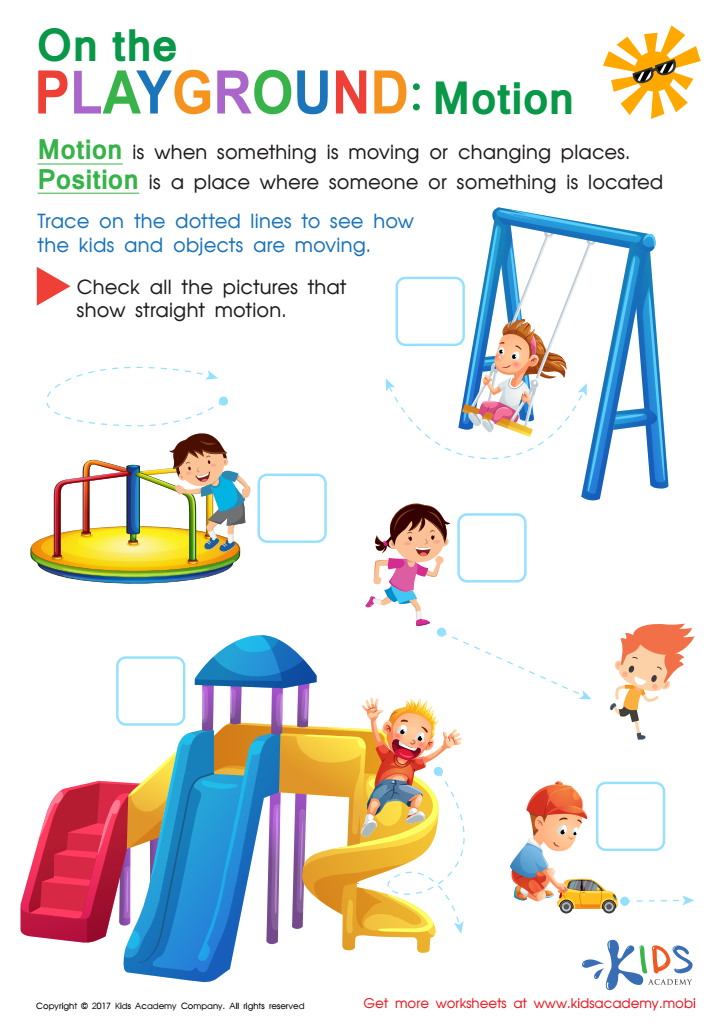

Position and Motion Worksheet
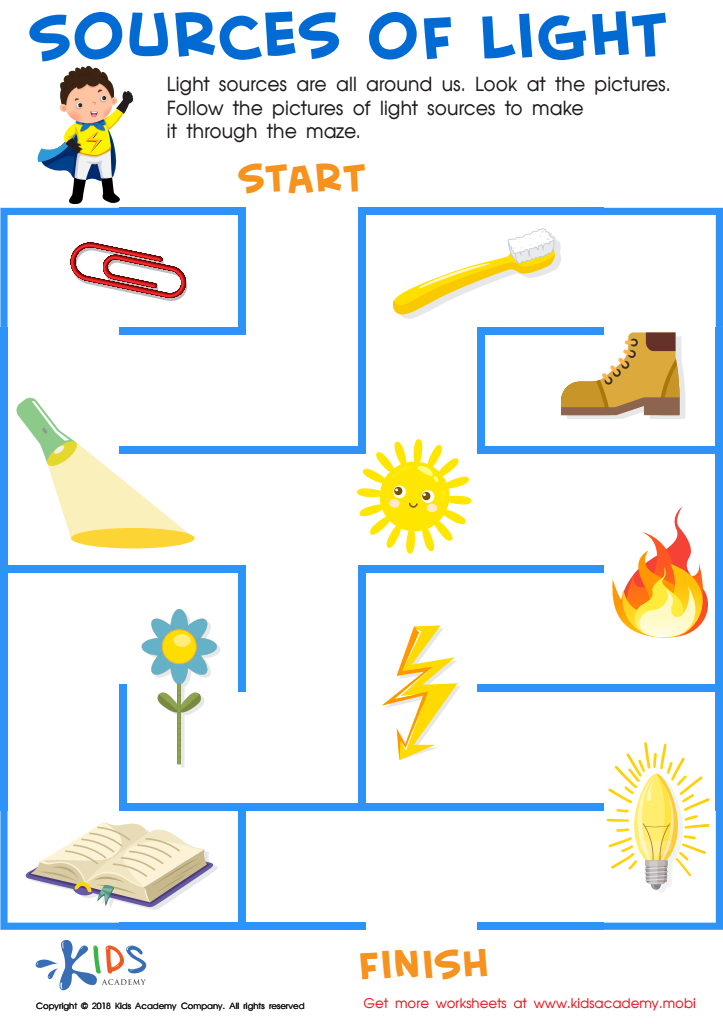

Sources of Light Worksheet
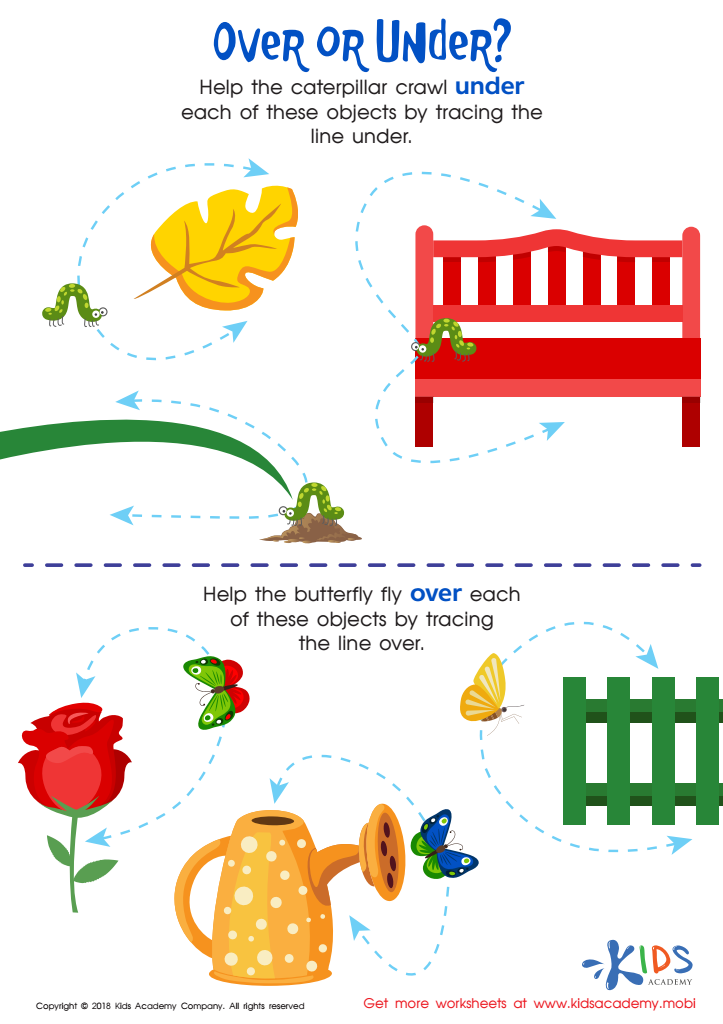

Over or Under? Worksheet


Will It Make a Shadow? Worksheet
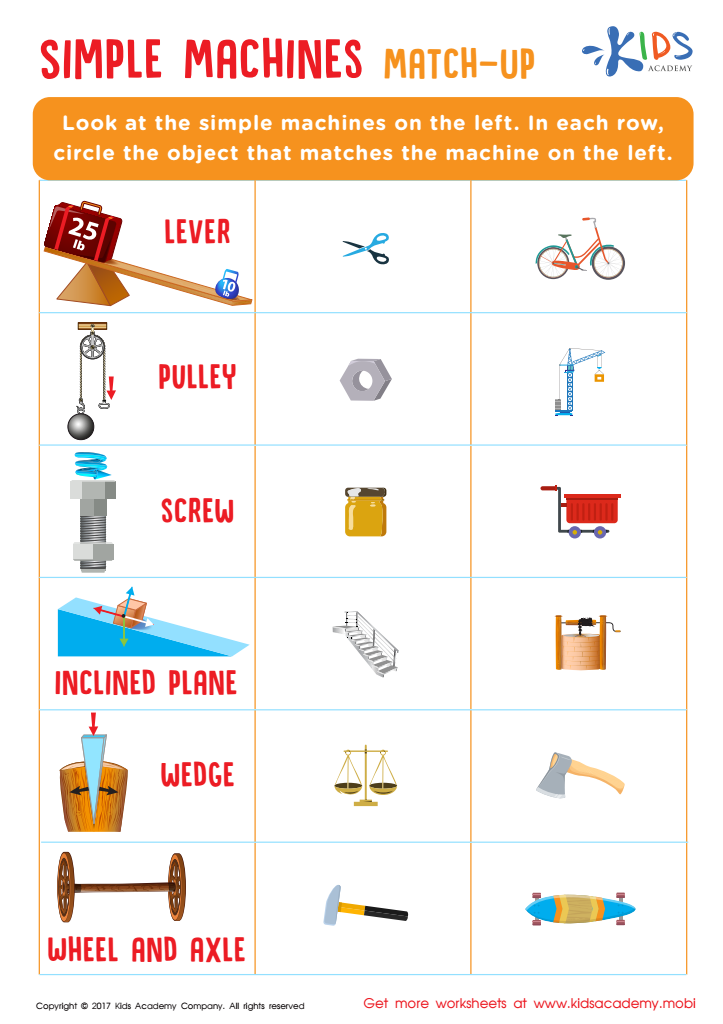

Simple Machines Worksheet
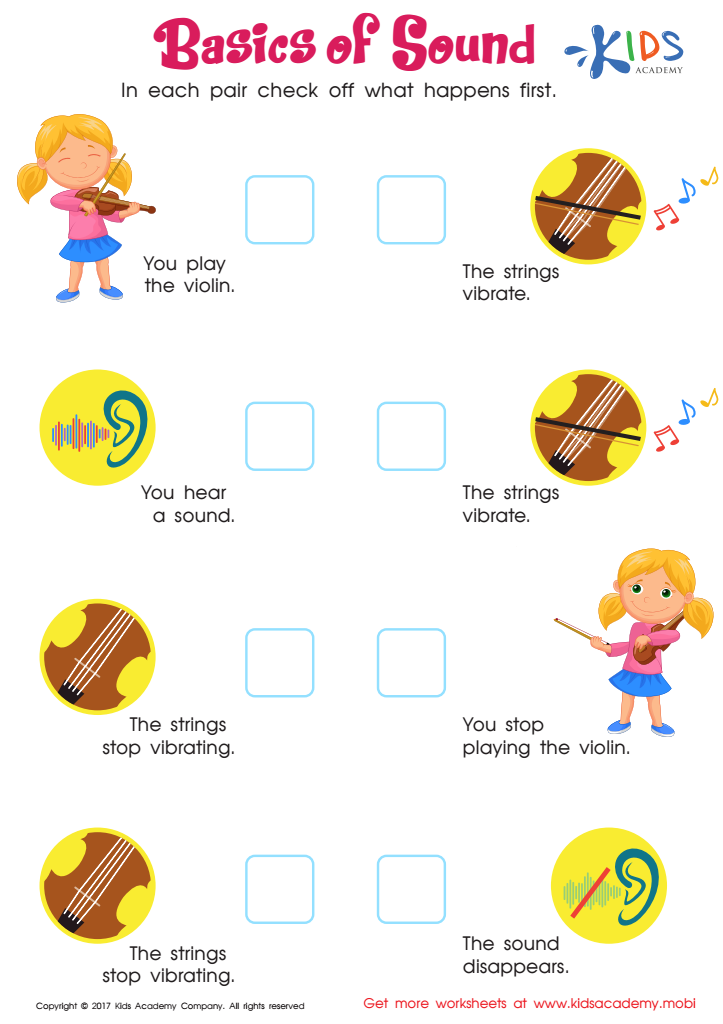

Basics Of Sound Worksheet


Magnetic Or Not Worksheet


Observing Properties Worksheet
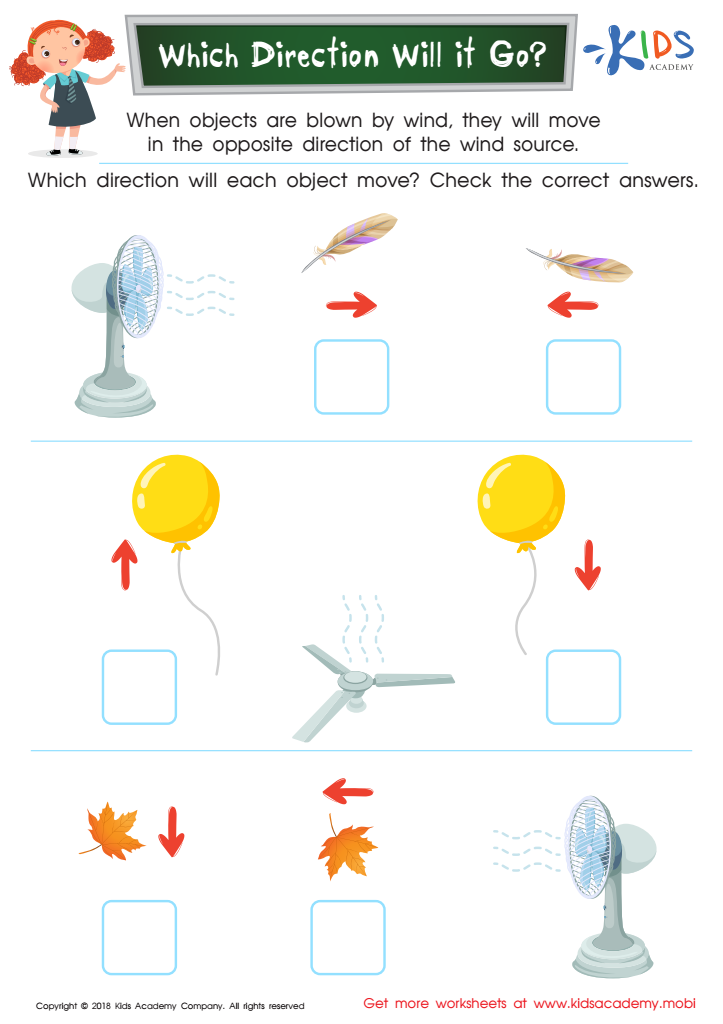

Which Direction Will it Go? Worksheet
Normal Physical Science for Ages 4-7 is crucial for developing a child's foundational understanding of the natural world. At this young age, children are naturally curious and explore their surroundings, making it an ideal time for them to engage with scientific concepts. Introducing them to basic physical science—understanding matter, energy, forces, and simple systems—promotes critical thinking and inquiry skills. It nurtures their innate curiosity and encourages them to ask questions, observe, and investigate, which are essential skills not just for science but for learning in general.
Furthermore, early exposure to physical science helps lay the groundwork for future academic success in STEM (Science, Technology, Engineering, and Mathematics) fields. It can enhance cognitive development by promoting problem-solving abilities, analytical thinking, and creativity.
Importantly, integrating normal physical science into early education fosters a sense of wonder and appreciation for the environment, instilling values like respect for nature and an understanding of scientific principles applicable to everyday life. By emphasizing physical science education, parents and teachers empower children to become informed, thoughtful citizens who are equipped to understand and navigate the complexities of the world as they grow.

 Assign to My Students
Assign to My Students



.jpg)











